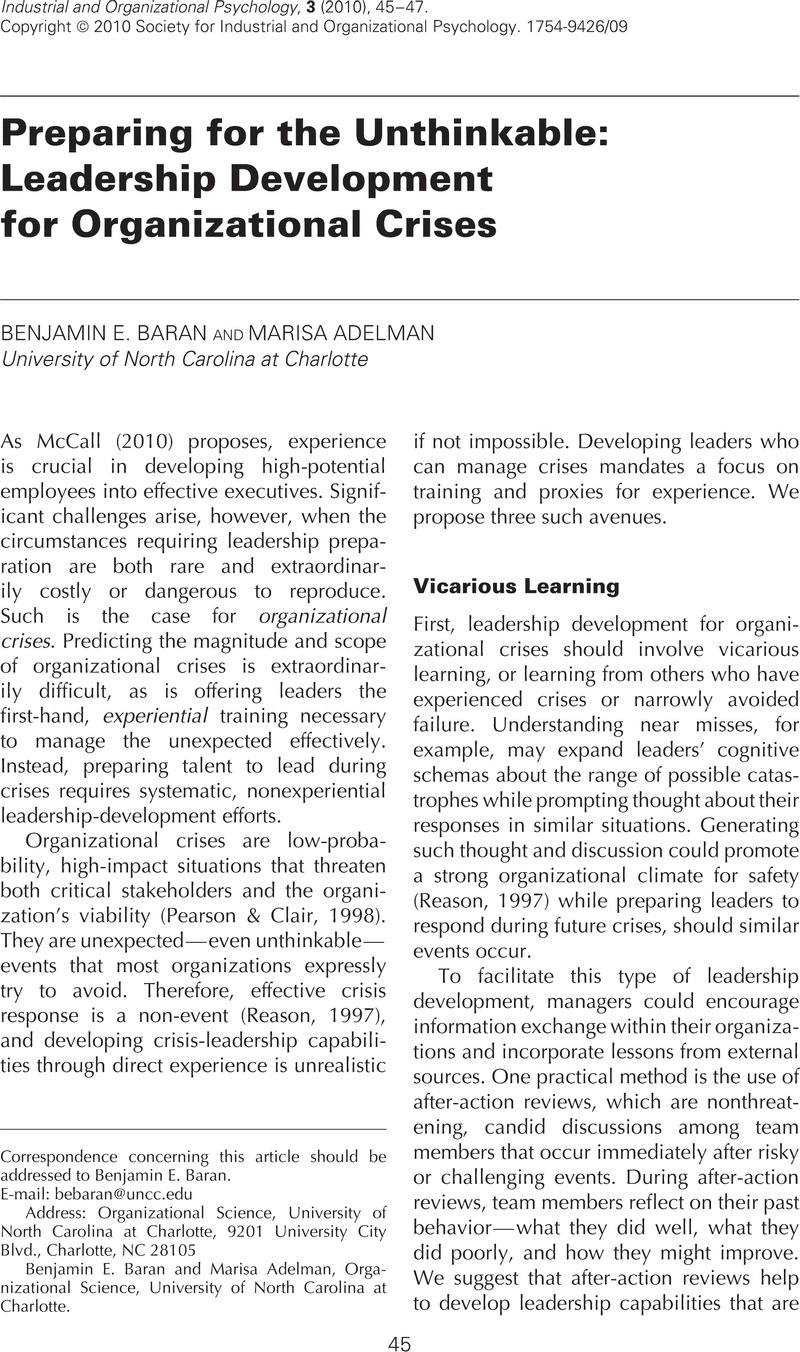Crossref Citations
This article has been cited by the following publications. This list is generated based on data provided by Crossref.
McCall, Morgan W.
2010.
Peeling the Onion: Getting Inside Experience-Based Leadership Development.
Industrial and Organizational Psychology,
Vol. 3,
Issue. 1,
p.
61.
Spector, Bert
2019.
There is no such thing as a crisis: A critique of and alterative to the dominant crisis management model.
Journal of Contingencies and Crisis Management,
Vol. 27,
Issue. 3,
p.
274.
Spector, Bert
2019.
Constructing Crisis.
Dýrfjörð, Kristín
and
Hreiðarsdóttir, Anna Elísa
2022.
Preschool staff perceptions of leader capabilities during COVID-19 early stage in Iceland.
Journal of Childhood, Education & Society,
Vol. 3,
Issue. 1,
p.
74.
Rudnev, Evgeny
2023.
People Management - Highlighting Futures.
Vol. 3,
Issue. ,
Psychogios, Alexandros
Szamosi, Leslie T.T.
Prouska, Rea
and
Gruda, Dritjon
2024.
Towards a framework for repairing stakeholder trust in entrepreneurial small businesses in times of macro-level crises.
Journal of Small Business and Enterprise Development,
Vol. 31,
Issue. 6,
p.
1146.



